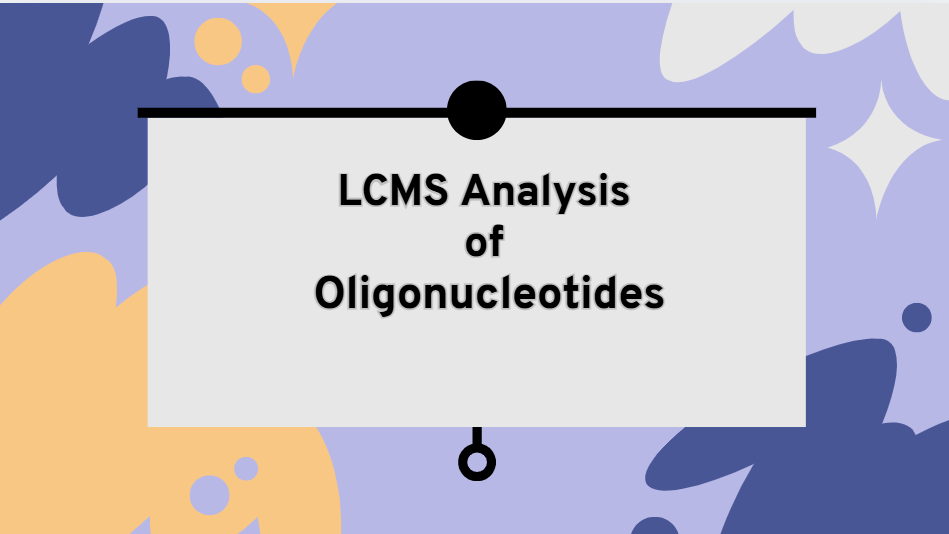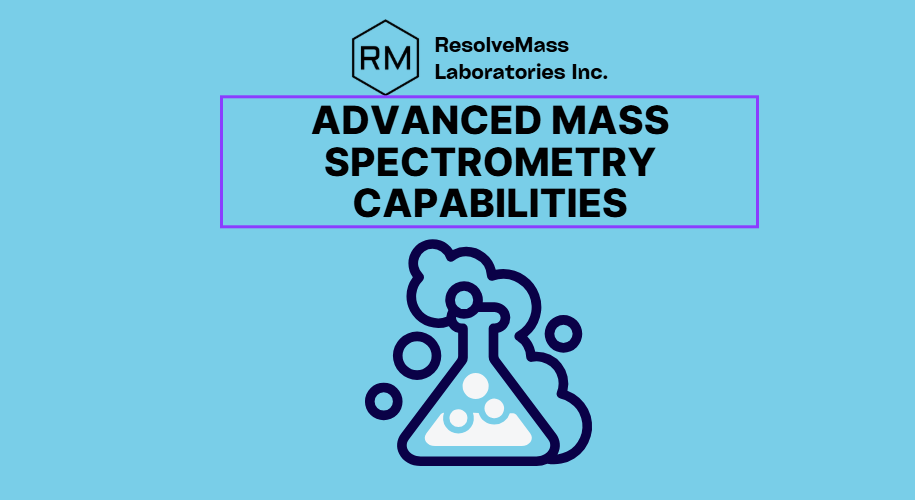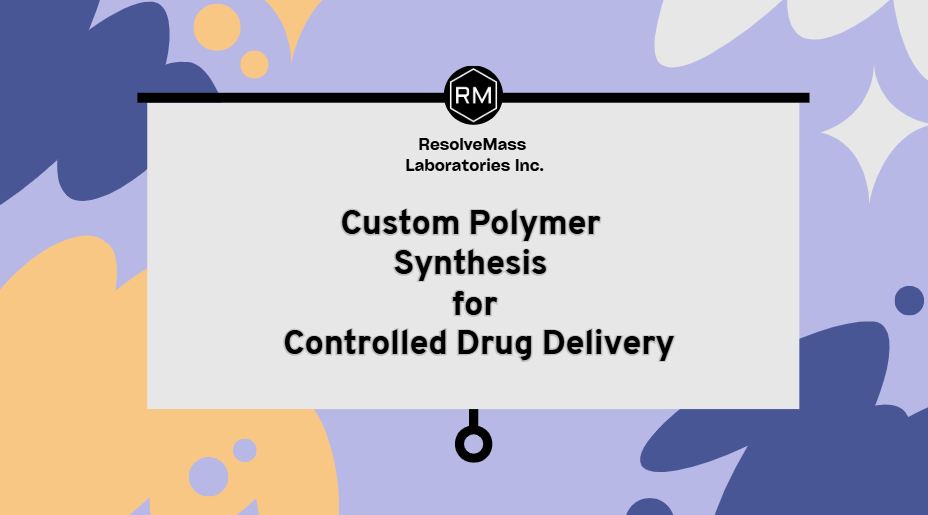
The rise of oligonucleotide therapeutics has ushered in a new era of precision medicine. These short, synthetic DNA or RNA molecules are engineered to target specific genetic sequences, providing innovative treatments for a variety of diseases, including rare genetic disorders, cancers, and viral infections. However, the production and development of oligonucleotide-based drugs present unique quality control (QC) challenges. Among the arsenal of analytical techniques, Liquid Chromatography-Mass Spectrometry (LCMS) has emerged as the gold standard for accurate, sensitive, and high-throughput analysis. In this blog, we explore how LCMS analysis of oligonucleotides ensures therapeutic safety and efficacy in the pharmaceutical industry.
What Are Oligonucleotides?
Oligonucleotides are short strands of nucleic acids, typically ranging from 15 to 30 nucleotides in length. They are synthesized chemically and can be modified to improve stability, binding affinity, and cellular uptake. Therapeutic oligonucleotides include:
- Antisense oligonucleotides (ASOs)
- Small interfering RNAs (siRNAs)
- Aptamers
- MicroRNAs (miRNAs)
- Splice-switching oligonucleotides (SSOs)
Importance of Quality Control in Oligonucleotide Therapeutics
Unlike traditional small molecules, oligonucleotides are prone to sequence errors, incomplete synthesis, and degradation, making quality control critical. Even minor impurities can significantly affect efficacy and safety. Regulatory agencies like the FDA and EMA demand robust analytical methods for batch release and stability studies. Key QC parameters include:
- Purity and identity
- Impurity profiling
- Sequence confirmation
- Batch-to-batch consistency
Why LCMS is Ideal for Oligonucleotide Analysis
1. High Sensitivity and Specificity
LCMS enables the detection of oligonucleotide impurities at trace levels, offering greater sensitivity than conventional UV or fluorescence detection. It differentiates between full-length products and truncated or modified sequences.
2. Accurate Mass Determination
LCMS provides high-resolution mass data, allowing accurate molecular weight determination and identification of degradation products, conjugates, or adducts.
3. Sequence Verification
Tandem mass spectrometry (MS/MS) enables oligonucleotide sequencing by fragmenting ions and analyzing their mass patterns, ensuring the correct order of nucleotides.
4. Rapid Throughput and Automation
Modern LCMS systems can analyze multiple samples with high reproducibility, supporting GMP-compliant workflows and large-scale production.
5. Structural Characterization
Advanced LCMS methods provide insight into the three-dimensional structure and post-synthetic modifications such as phosphorothioate backbones and PEGylation.
LCMS Workflow for Oligonucleotide QC
Sample Preparation
- Desalting and purification
- Enzymatic digestion (if needed)
- Derivatization for improved ionization
LC Separation
- Reverse-phase or ion-pair chromatography
- Separation based on size, charge, or hydrophobicity
MS Detection
- Electrospray Ionization (ESI) in negative mode
- High-resolution TOF or Orbitrap detectors
- Data-dependent acquisition (DDA) or data-independent acquisition (DIA)
Data Analysis
- Deconvolution of charge states
- Comparison against reference standards
- Impurity mapping and quantification
Case Studies: Real-World Applications of LCMS in Oligonucleotide QC
1. Identification of Phosphorothioate Impurities
LCMS identified trace levels of incorrect sulfur incorporation in phosphorothioate-modified ASOs, ensuring safety and improving synthesis protocols.
2. Monitoring siRNA Stability
By analyzing siRNA duplexes under physiological conditions, LCMS helped predict degradation pathways and improved formulation stability.
3. Aptamer Conjugate Verification
LCMS confirmed successful PEGylation of aptamers used in diagnostic assays, ensuring desired bio-distribution and pharmacokinetics.
Regulatory Guidelines Supporting LCMS Analysis of oligonucleotides QC
- ICH Q6A/B: Specifications for new drug substances and products
- FDA Guidance (2021): Emphasizes orthogonal and mass-based analytical techniques for nucleic acid drugs
- EMA Guideline on oligonucleotide-based therapeutics (2022): Endorses LCMS for impurity profiling and identification
Challenges in LCMS Analysis of Oligonucleotides
- Ion suppression due to matrix effects
- Complex data interpretation due to charge envelopes
- Limited fragmentation for longer sequences
- Need for custom software tools
Despite these challenges, continuous advancements in instrumentation, column chemistry, and bioinformatics are addressing these limitations.
Emerging Trends in LCMS Analysis of oligonucleotides Therapeutics
- Native MS for studying non-covalent interactions
- Top-down sequencing for full-length oligo characterization
- Hyphenated techniques like LC-MS/MS-UV for improved detection
- Machine learning for impurity prediction and automated analysis
REFERENCES
- Lemaitre MM. Individualized antisense oligonucleotide therapies: how to approach the challenge of manufacturing these oligos from a chemistry, manufacturing, and control-regulatory standpoint. nucleic acid therapeutics. 2022 Apr 1;32(2):101-10.
- Aartsma-Rus A, Gagnon K, Watts J, Yu T. OTS Rare Disease N-Of-1+ Workshop Briefing Document [Internet]. 2021
- Baratta F, Simiele M, Pignata I, Iozzino MB, DE PELLEGRINI I, Torta R, Collino M, D’Avolio A, Brusa P. Cannabis FM2: optimization and standardization of galenic preparations. InAbstract book-3rd European Conference on Pharmaceutics. Bringing science into pharmaceutical practice 2019 (pp. 18-18). /.
Comparing Custom Synthesis Quotes: What’s Included and What’s Not
When you Compare Custom Synthesis Quotes, the differences between laboratories can often mean thousands of…
Analytical Method Development and Validation in Pharmaceuticals
Analytical method development in the pharmaceutical industry is the systematic process of designing procedures to…
Top FAQs About Custom Synthesis Answered
Introduction In today’s rapidly changing world of chemical innovation, custom synthesis stands as a driving…
Use Case: Custom Synthesis in Material Science & Polymers
Introduction In today’s fast-evolving material science field, Custom Synthesis Polymers are transforming how industries develop…
Case Study: Custom Synthesis for a Novel Small Molecule Therapeutic
Introduction Developing a new small molecule therapeutic requires accuracy, creativity, and dependable collaboration. In this…
How Custom Synthesis Supports Innovation in Life Sciences
Introduction In today’s fast-moving world of biotechnology and pharmaceuticals, Custom Synthesis Innovation has become a…







